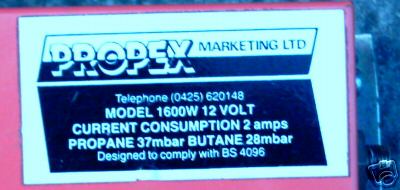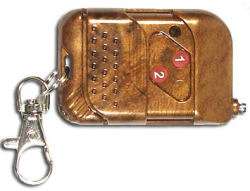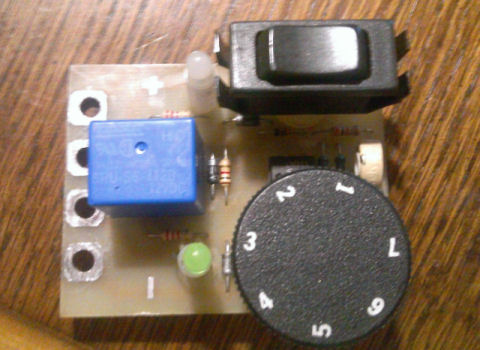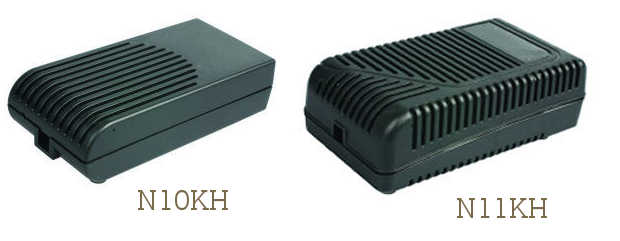Difference between revisions of "Camping Interior Propex"
Ghost123uk (talk | contribs) |
Ghost123uk (talk | contribs) |
||
| Line 138: | Line 138: | ||
Propex Burn-out (check your earths!): http://forum.club8090.co.uk/viewtopic.php?f=39&t=138206 | Propex Burn-out (check your earths!): http://forum.club8090.co.uk/viewtopic.php?f=39&t=138206 | ||
A wiki "Discussion section" on: "How well does a Proipex 1600 heat a camper van - http://wiki.club8090.co.uk/index.php/Talk:Camping_Interior_Propex | A wiki "Discussion section" on: "How well does a Proipex 1600 heat a camper van" - http://wiki.club8090.co.uk/index.php/Talk:Camping_Interior_Propex | ||
Search Tech Questions or Tech Archive | Search Tech Questions or Tech Archive | ||
See club website - 'Other stuff' for manuals | See club website - 'Other stuff' for manuals | ||
Revision as of 10:26, 18 January 2015
Specifications
1.8 KW Propex
ECONOMY
These are the specs for a modern Propex:
Gas consumption for a Propex Space Heater HS2000 - Single outlet - 12 volt (calculated on a continuous running basis) as follows :-
Average gas consumption 128grams/hour
3.9kg propane cylinder 30.5hrs
4.5kg butane 35.0hrs
TECHNICAL SPECIFICATIONS
Heat input 1.8KW
Heat output 1.6KW
Voltage 12V or 24V
Current consumption 1.2A cont. running
Air throughput 50 C.F.M.
Propex support info: http://www.propexheatsource.co.uk/support
Propex 1600 Compact: http://www.propexheatsource.co.uk/pdf/compact
Contact Propex
Propex Heater Use
Yes, you can safely use your Propex while driving (whoopee) but always turn it off before you drive into a petrol station. Get the heater checked by Propex if you have issues you can't solve easily. Turn it on at least once a month (even in the Summer) to make sure it is fully functional - they hate being left.
Hard Starting
Anon: Unfortunately, it refused to light. I could hear the sound of the ignition trying to fire up but no warm air. Everything else works fine i.e. the fridge and the hob but not my heater. Are they dependent on gas pressure as I am unsure of the amount of gas left in the bottle? Any ideas before I freeze to death?
Hacksawbob Propex won't light if pressure is too low, get a refill and try again. Also if your running blue bottle (butane) this doesn't like the cold so wont light. ( Only solution is to warm the bottle (I've heard of people taking it into the shower with them on campsites!) or upgrade to propane (red bottles) you'll need to change the regulator too. I have an autohomes and the red bottle wont stand up in the cupboard so lie it down when not in use and secure it some how for driving.
Aidan: Modern version needs to be used regularly 'cos there's a secondary passive fan with an optical sensor in the air flow to check the flow is as required, part of interlock for CE approval that old ones didn't have apparantly. If not used the bearing grease in the passive fan goes a bit thick and so when the blower notor blows the fan doesn't spin fast enough to activate the optical sensor so locks out.
I phoned Propex when this happened to me and the advice was take an airline with nozzle on and blow through the external pipes in the inlet which will spin up the passive fan, after about thirty secs the grease will be redispersed and the thing will then light ok when you go through the normal start. Worked fine for me, I used an old sock to seal the inlet end with the air line blower attachment.
Top tip from Propex (and it's in the manual) is run the heater every month, even in the summer just to keep it free running and ready to light when you really need it.
Propex will not fire up
The Propex heater supply line MUST be up to the job. Inadequate cable can cause voltage drop and the heater will either not fire up or will not run for long. See:http://forum.club8090.co.uk/viewtopic.php?f=40&t=118113
It also won't fire if no gas is present or in the case of blue gas bottles, the temperature is too low. Propane (red bottles) are recommended for all year round use but you can use butane (blue) providing ambient temperature is not too cold. For hardened winter campers or those that like to use their Propex on winter mornings, Propane (red) is the only choice.
Adjusting Sensitivity
The Adjuster preset is a hysteresis control which can alter the temperature differential from 4°C to 1/2°C.
To adjust the thermostat, first pull the dial knob off and remove case by undoing the screw beneath the knob.
If you look carefully at the board you should see a small white round component, into which you can insert a tiny screwdriver and turn to adjust. Note its present position for reference. There is a small arrow in the centre to show which way it is adjusted.
For maximum sensitivity turn the preset fully anticlockwise, and for minimum sensitivity turn it clockwise. The preset is not a linear control and most of the adjustment is toward the anticlockwise endstop.
You don't want it so sensitive that the heater cuts in and out too regularly as it will be less economic to run. Trial and error may be needed to get it just right.
Testing Propex Heater
If you need to test a Propex to see if its working (ie you've got a s/h one) or you think thermostat may be faulty, with heater isolated connect the red and orange together and connect to 12v +. Connect black to earth or chassis. Ignore the purple wire. If the heater tries to fire then heater probably works. If it doesn't the fault is in the heater or spark generator (black box) and your best bet is to send it to Protex for checks/repairs - its cheaper than a new heater.
Remote Controlled Propex
Penned by Covkid
Why a remote control? A remote control for your Propex is perfect for those days when you're knee-deep in snow or your locks are frozen solid or you want to defrost and not have to scrape windows like everyone else. It works from indoors so no more trips out in the cold to turn your Propex on!
DO remember you take on this project at your own risk. It could invalidate your guarantee and neither I nor 80-90 accept responsibility if you damage your Propex circuitry or anything else.
Overview
You can ofcourse trigger the 'heating on' circuit in various ways, ie via a tracker and other phone-based systems but then you may be paying to switch your heater on. In addition, too often people wire them into the heater supply line and it won't then go through a normal shut-down routine which would leave the heater case interior far too hot and potentially damage components and/or items close to the heater. Propex added the cool-down cycle for good reasons. This project switches the heater off correctly and uses an RF remote control transmitter (rather than infra-red).
Heres the remote kit type I used (under a fiver): http://www.ebay.co.uk/sch/i.html?_from=R40&_trksid=p2047675.m570.l1313.TR0.TRC0.H0&_nkw=12V+10A+Relay+2CH+Wireless+RF+Remote+Control&_sacat=0 - Single or dual channel is all you need unless you want to control lots of things remotely. It should be rated for at least 10 amps. They all work in a similar way but some have far more relays than you'd ever need. Try to keep it simple.
The Propex control unit is a relatively simple affair - a thermostatic control and a relay to switch the heater/fan load. The thermostat is operated manually by a rocker switch and dial with LED indicators to show present mode of operation. There are two models I know of - this just happens to be mine but principals apply to both. Adding a remote function still allows you to use the control unit manually - or up to several metres away via your remote fob. Manufacturer claims it will operate over a range of 50-100m (open area).
Connections
Pictured below is the Propex thermostat board removed from its case. You'll need to remove this for the soldering but do draw a diagram of where the original wires went to you can put it back correctly. Later boards have terminal blocks instead of screw/ring connections (see below) but otherwise operate the same.
Firstly you'll need to solder a two-core cable off from back of rocker switch to remote receiver (solder points shown here with red spots):
This new cable (basically a loop) goes to load side of relay (relevant connectors on green terminal block) on remote receiver shown below. This is actually the only connection needed between thermostat and remote receiver. Essentially all you're doing is copying exactly what the rocker does when you switch the heater to 'heat' or 'off' - but remotely.
Wired this way, when you switch off at remote controlled fob, heater will also still go through its normal cool-down cycle (important). The only other cable that needs to go to remote receiver is 12v +- to provide power to it, which you can either take from thermostat itself or another 12v point nearby. The receiver doesn't draw much (most of it is actually 5v on the board) but it needs the full 12v to power the relay.
If your thermostat looks different to mine (ie yours has terminal blocks), with the board out, just put a meter between middle and outer terminals on back of board and check for continuity when you switch to 'heater on' position. Then you know which terminals are the ones you want. Whichever has continuity is the correct side. With it switched the other way, you'll get fan only ofcourse. If this has lost you already, please don't attempt it - get someone who knows what they're doing.
Functionality
Bear in mind, if you have manually switched heater on (ie via rocker switch), the remote receiver will click away but it will have no effect on heater. The rocker will always overide the remote function. Remote will only work if rocker is in mid-position (ie switched off at thermostat). I'll be stating the obvious to some, but best explained.
It seems to work over quite a distance - certainly from indoors. I found it worked ok from the opposite side of the house. I see no reason why it could't operate over 50-100m in an open area as claimed, but through brick/metal etc, this range will obviously be much less.
I ran long cable (initially) to remote receiver so I could test which position will be best to mount it for optimimum range via remote but window level is ideal.
Further Thoughts:
Rather than solder to thermostat switch, you could in fact (if you follow circuit tracks - simply connect one wire at screw terminals but it can get a bit cramped then.
You could fit a plug socket in the stock thermostat case (suitably rated) so the remote unit just plugs into it. That way you can unplug it and everything is as it was.
The perfect solution (and where I'm taking this project now) is to remount thermostat board inside a slightly bigger vented project box, along with remote receiver and install a seperate choc-bloc arrangement inside to allow for all the internal connections. It would then be entirely self-contained, lose the connections between thermostat and remote receiver, and only have the stock cable coming out of the box. It seems likely that were Propex to offer a remote facility, thats just how they'd construct it - as a combined unit. You do however need to weigh up the time involved - and whether you possess the skills.
There are a couple of ways to do this. The first would be to take the complete back of the original stock thermostat case with board still attached, and mount inside a larger case as it is. If you'd prefer to do that, I suggest Maplins "Vented PSU Enclosure 9" (Code: N11KH) but its a bigger case at 156 x 88 x 49. The alternative (probably) would be to cut down the edges of the back of the stock thermostat case and hot-glue into a smaller case, in which case use Maplins "Vented PSU Enclosure 8" (Code: N10KH) - 151 x 71.5 x 45. It will all fit in the latter (at a squeeze) and not take up a great deal more space than the stock thermostat case. You may need to drill additional vent holes with that case. With both cases you'll need to modify or block off one end designed to takes a mains socket. However you do it, draw a small map of internal connections for reference and keep it folded up inside the case.
Just bear in mind that there will be a lot of neat drilling and cutting required - not for your average DIY bod. Remember case must be well vented or it won't sense interior temperature!
An LED that is easy to see at a distance when the heater is actuated by the remote is a must. The main reason is that when the heater thermostat switches the burner off when optimum temperature is reached, normally the fan only will kick in as part of the cool-down process (independent of rocker OR remote). When this happens, the remote won't have any effect and you have to look at the thermostat's own on/off LED to determine if remote action is on or off. Thats fine if thermostat can be easily seen but when it can't, you'll lose track of whether you're on or off.
A more prominent light is therefore advised. Maplins do what they call an alarm LED - basically a flashing red LED that you can run direct to any 12v source. You could simply run from from the 'on' light on the thermostat but thinking about it, you don't want a bright light flashing in your camper every single time the heater is on, so I would suggest that this is wired at the remote receiver instead. That way it won't flash when you switch the heater on from inside but it will if fired up via remote. Ghost123UK and I discussed the LED and he (rightly) suggested it actually take its power from the relay coil in the remote receiver - that makes a lot of sense since it would be unaffected by the rocker switch and will supply the 12v needed for flashing LED.
This video, whilst not the same remote board, gives you a better understanding of how they work: https://www.youtube.com/watch?v=YOW0LlWaL5c and how you can change the remote code if you want to.
Forum links
Propex Burn-out (check your earths!): http://forum.club8090.co.uk/viewtopic.php?f=39&t=138206
A wiki "Discussion section" on: "How well does a Proipex 1600 heat a camper van" - http://wiki.club8090.co.uk/index.php/Talk:Camping_Interior_Propex
Search Tech Questions or Tech Archive
See club website - 'Other stuff' for manuals





